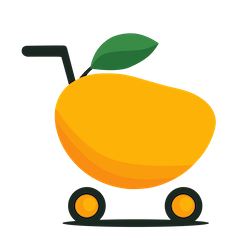The Copywriter’s Book Matrix
Want to find the perfect copywriting book for YOUR unique situation in just 30 seconds? Use my simple matrix below to match your needs with the right book.
For Different Channels
For Specific Copywriting Skills
| Skill Gap | Beginner | Intermediate | Advanced | Key Insight |
|---|---|---|---|---|
| Headline / Hook | Ca$hvertising (Drew Whitman) | The Adweek Copywriting Handbook (Joseph Sugarman) | Tested Advertising Methods (John Caples) | A landing page headline change drove a 321% increase in eyeballs |
| Emotional Storytelling | Building a StoryBrand (Donald Miller) | Made to Stick (Chip Heath & Dan Heath) | All Marketers Tell Stories (Seth Godin) | 70% of folks very likely to buy a product were emotionally triggered by an ad |
| Creating Urgency and Desire | Ca$hvertising (Drew Whitman) | Influence (Robert Cialdini) | Breakthrough Advertising (Eugene Schwartz) | Time-sensitive offers like flash sales or countdown timers can increase conversion rates by up to 50% |
Note:
- Some books appear multiple times because they’re helpful for different needs.
- The books links directly go to Amazon (no affiliate links – I do not earn any commissions)
–
Why Most Copywriting Book Lists Let You Down
Now that you’ve seen which books might work for you, let’s talk about why finding the right copywriting books matters more than just getting a big reading list.
Most “best copywriting books” lists simply throw titles at you without explaining which ones match your specific needs. This wastes your time as you flip through books that don’t address your actual challenges.
This guide helps you pick the right books for your exact situation, whether you’re writing sales pages, emails, or social media posts.
Let’s look at each book in detail so you know exactly what you’ll get before you buy.
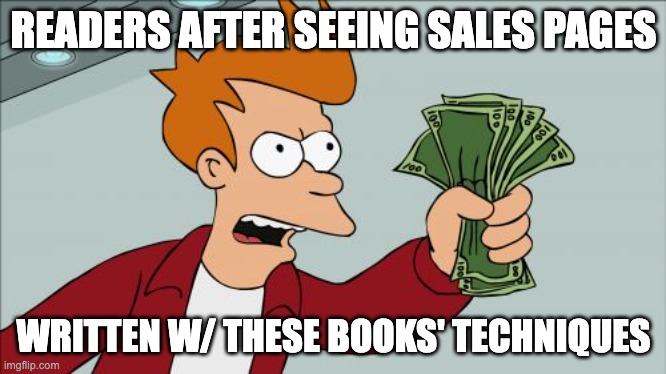
–
Book For Sales Page Copywriters
The Copywriter’s Handbook (Robert Bly)
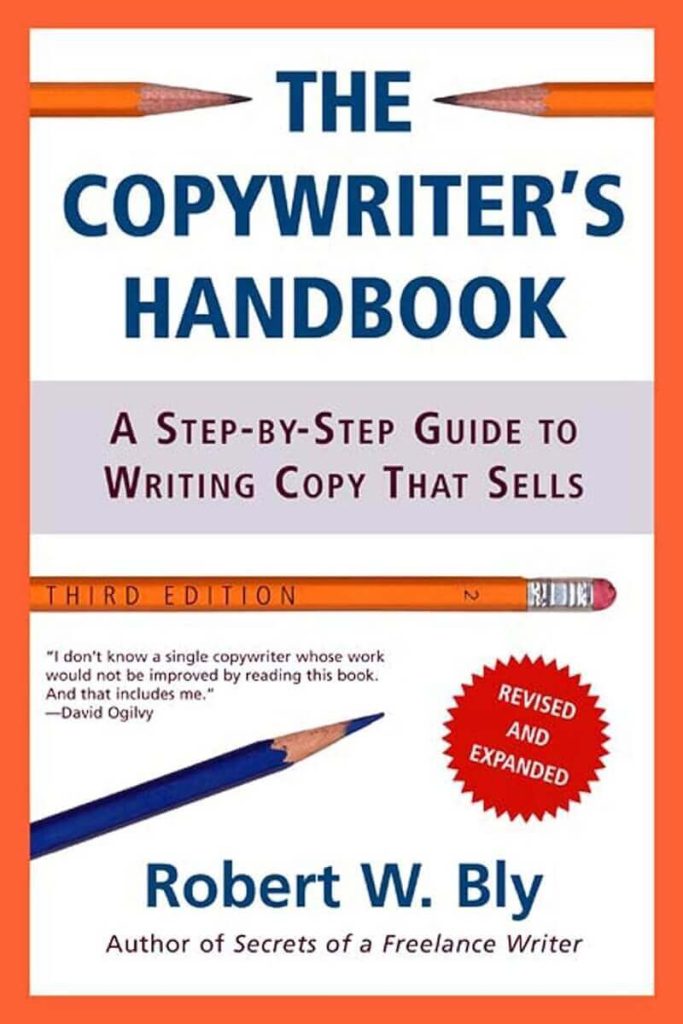
This book gives beginners a solid foundation in copywriting fundamentals. Chapters 5-8 specifically cover how to write sales pages that convert visitors into buyers.
The handbook includes ready-to-use templates you can apply to your sales pages right away. For example, Bly provides a 13-point checklist for sales pages that helps you avoid common conversion killers like burying benefits or using weak calls to action.
Ca$hvertising (Drew Whitman)
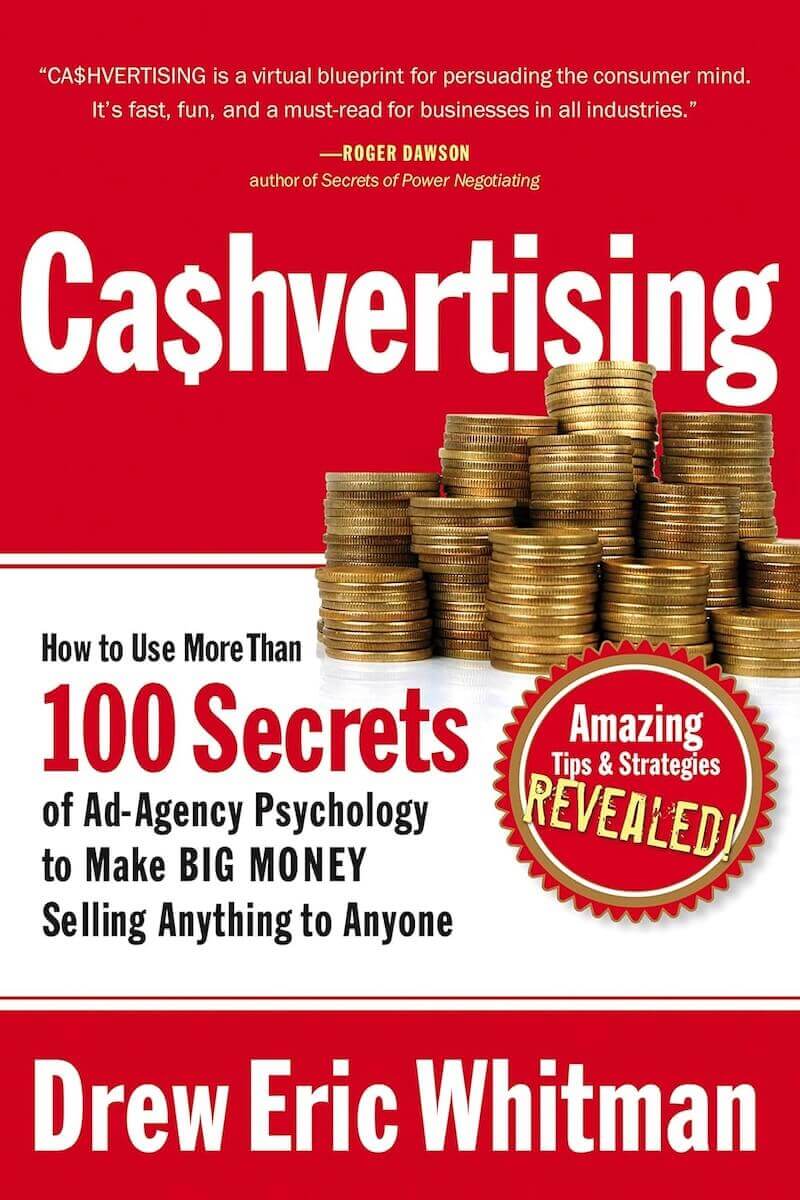
Whitman explains the psychology behind why people buy things in simple, practical terms. The book reveals the “Life-Force 8” desires that drive purchases, like the need for survival, enjoyment of food, freedom from fear, and social approval.
You’ll learn concrete techniques to tap into these desires in your sales copy. For example, Whitman shows how to rewrite a basic product feature into three different appeals targeting fear, greed, or comfort—with examples that you can model for your own products.
Breakthrough Advertising (Eugene Schwartz)
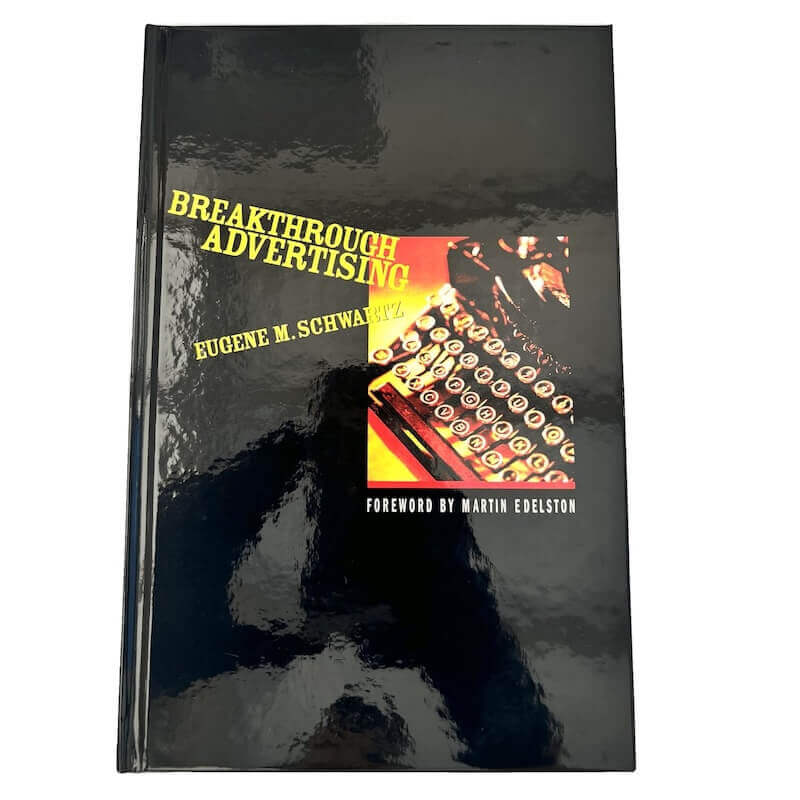
This 1966 classic remains so valuable that the authorized 2015 reprint sells for $125-290. The book is particularly useful if you’re writing copy for competitive or mature markets where customers have seen it all.
Chapters 3-5 on market sophistication are gold for sales page writers. Schwartz shows exactly how to adapt your claims and proof based on where your market falls on his 5-level sophistication scale, with specific examples for each level.
–
Books For Email Marketing Specialists
Everybody Writes (Ann Handley)

This book includes specific guidance for email copywriters in today’s AI-heavy world. Handley shows you how to write conversational emails that people actually open and read.
The book breaks down how to structure emails for maximum readability and response rates. For example, she provides a simple 3-part framework for transforming any corporate announcement into a reader-focused message that employees or customers will actually want to engage with.
Email Persuasion (Ian Brodie)
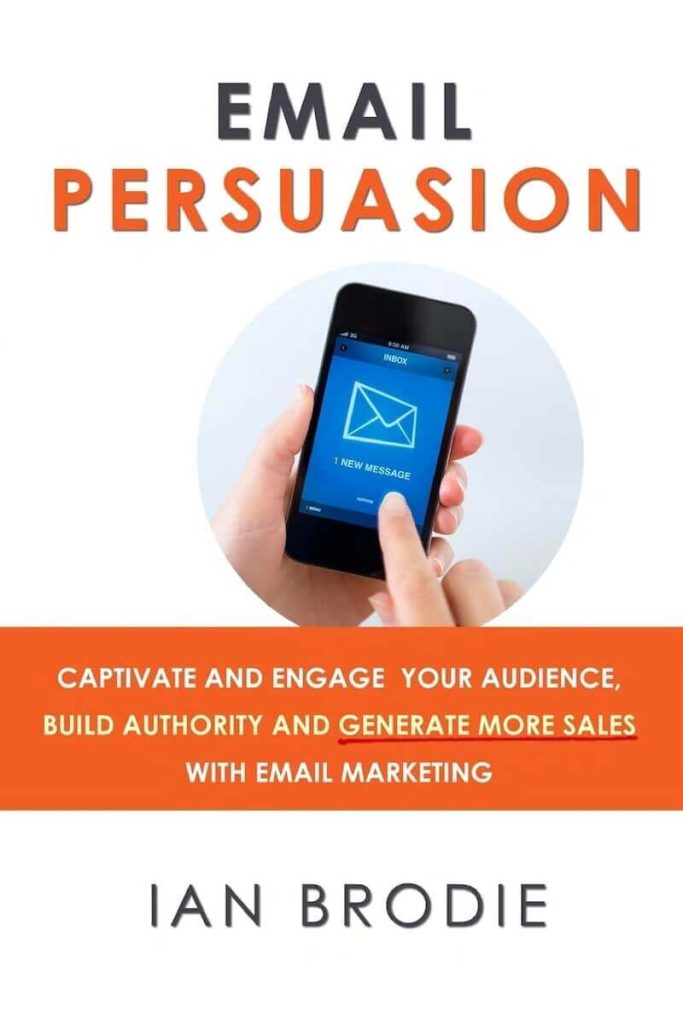
This book focuses specifically on building relationships through email, not just making quick sales. Brodie’s database-driven approach works particularly well for service businesses and consultants.
You’ll get a complete framework for creating email sequences that gradually convert subscribers into customers. The book’s standout feature is Brodie’s “Nurture Email Sequence” template that walks you through a 5-email welcome series with specific objectives for each message.
The Boron Letters (Gary Halbert)
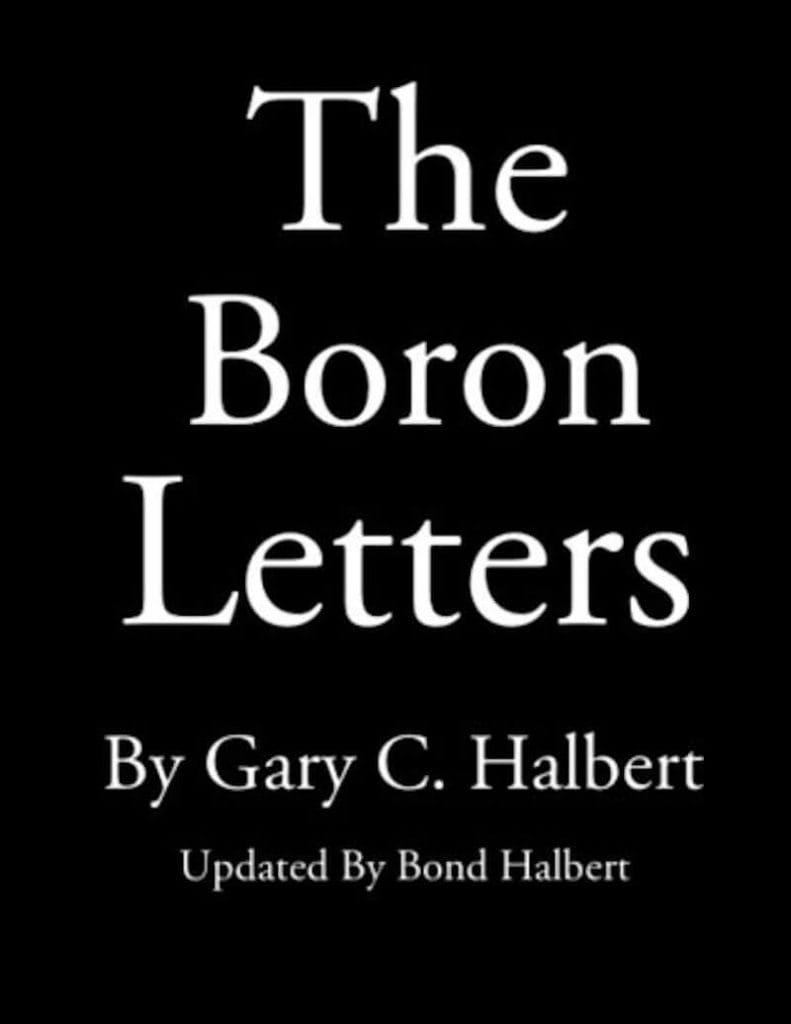
These letters were originally written by legendary copywriter Gary Halbert to his son from prison. Letters 7, 12, and 18 contain especially valuable insights for email marketers.
Halbert’s techniques for personal engagement work surprisingly well for automated email sequences. For example, Letter 12 reveals his “A-pile/B-pile” concept that shows exactly how to make your emails get noticed instead of ignored—a principle that applies perfectly to today’s crowded inboxes.
–
For Social Media Copywriters
Building a StoryBrand (Donald Miller)

Miller’s SB7 Framework helps you clarify your message so it works even in short social media formats. The book shows you how to position your customer as the hero and your brand as the guide in their story.
Real examples demonstrate how these storytelling principles work on platforms like Instagram and X (Twitter).
Made to Stick (Chip Heath & Dan Heath)
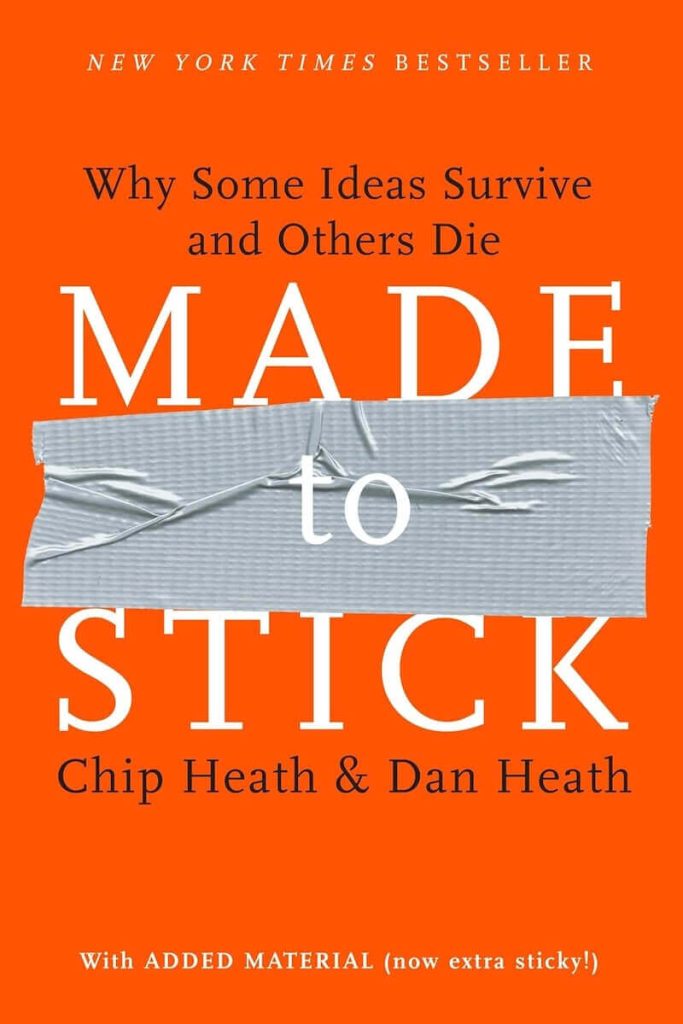
The Heath brothers reveal why some ideas catch on while others fade away. Their SUCCESs framework (Simple, Unexpected, Concrete, Credible, Emotional, Stories) works perfectly for space-limited social media posts.
The book explains why psychology-based approaches beat formula-based methods every time. For instance, the authors break down why Southwest Airlines’ “THE low-fare airline” message stuck while competitors’ claims didn’t—insights you can apply directly to your social media positioning.
Words That Sell (Richard Bayan)
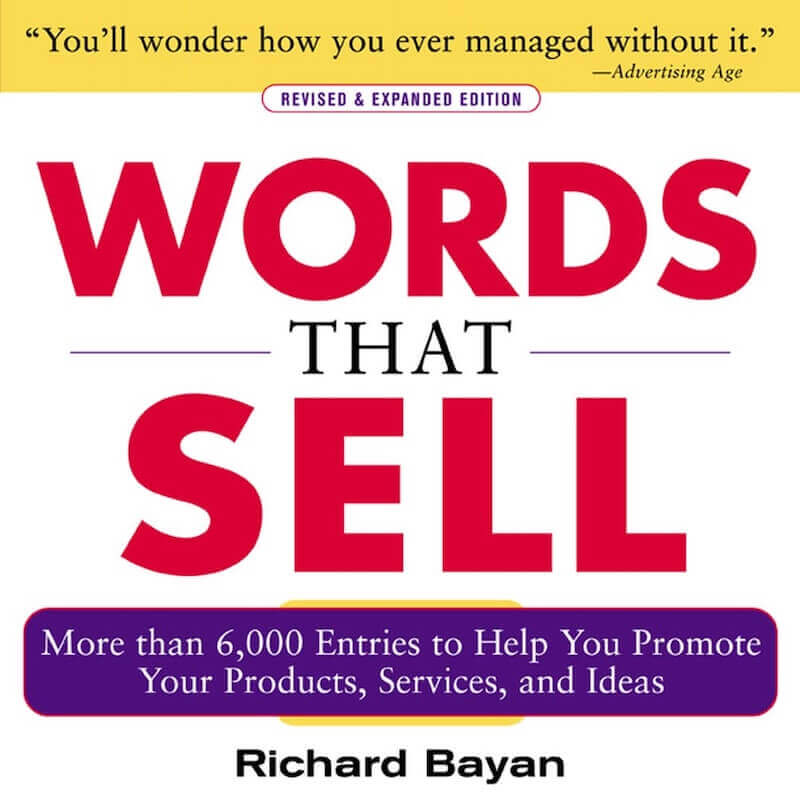
This practical reference contains power words specifically chosen for different emotional responses. The book functions like a thesaurus for copywriters, helping you find alternatives to overused words and phrases.
You’ll get lists of words sorted by purpose, making it easy to find options for any social platform. For instance, when you need words that convey exclusivity, you’ll find options like “limited edition,” “members only,” and “by invitation” all organized for quick reference.
–
For Content Marketers & SEO Writers
They Ask, You Answer (Marcus Sheridan)
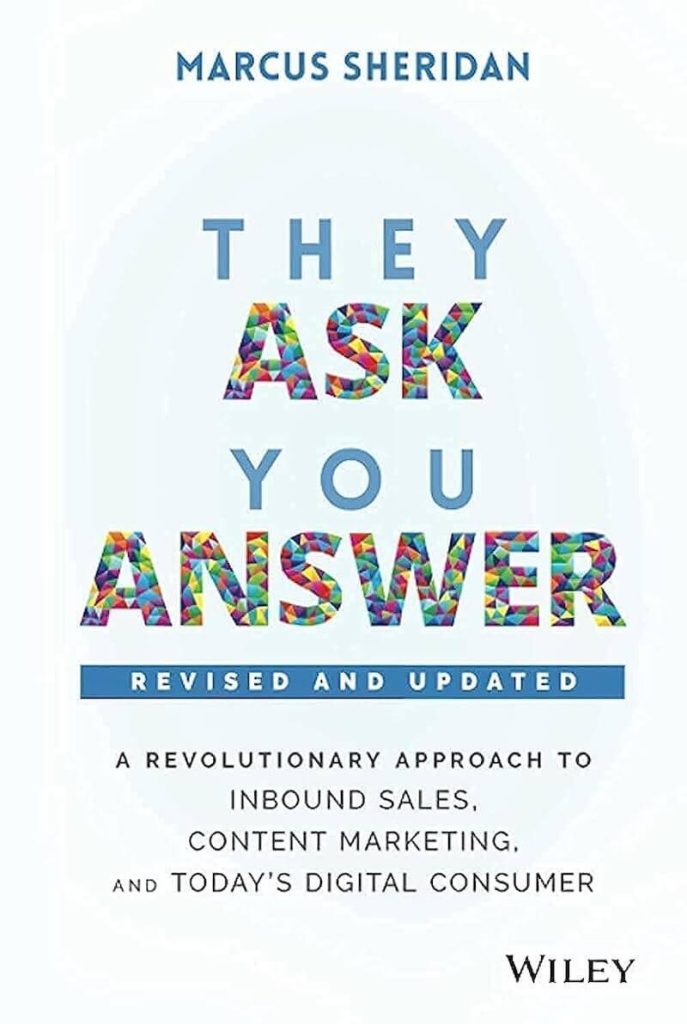
Sheridan shares how answering customer questions transformed his struggling pool company into an industry leader. The book explains exactly how to identify the questions your customers are already asking.
Case studies show the SEO performance of question-focused content, with many businesses seeing first-page rankings.
Everybody Writes (Ann Handley)
This book appears twice in our recommendations because it’s equally valuable for email and content marketing. Chapters 17-23 specifically address how to balance SEO needs with readability.
Handley’s “utility × inspiration × empathy” framework ensures your content serves both human readers and search engines. For example, she shows how to transform a basic keyword-stuffed product description into something that both ranks well and actually persuades human readers—a crucial skill for today’s content creators.
The Adweek Copywriting Handbook (Joseph Sugarman)
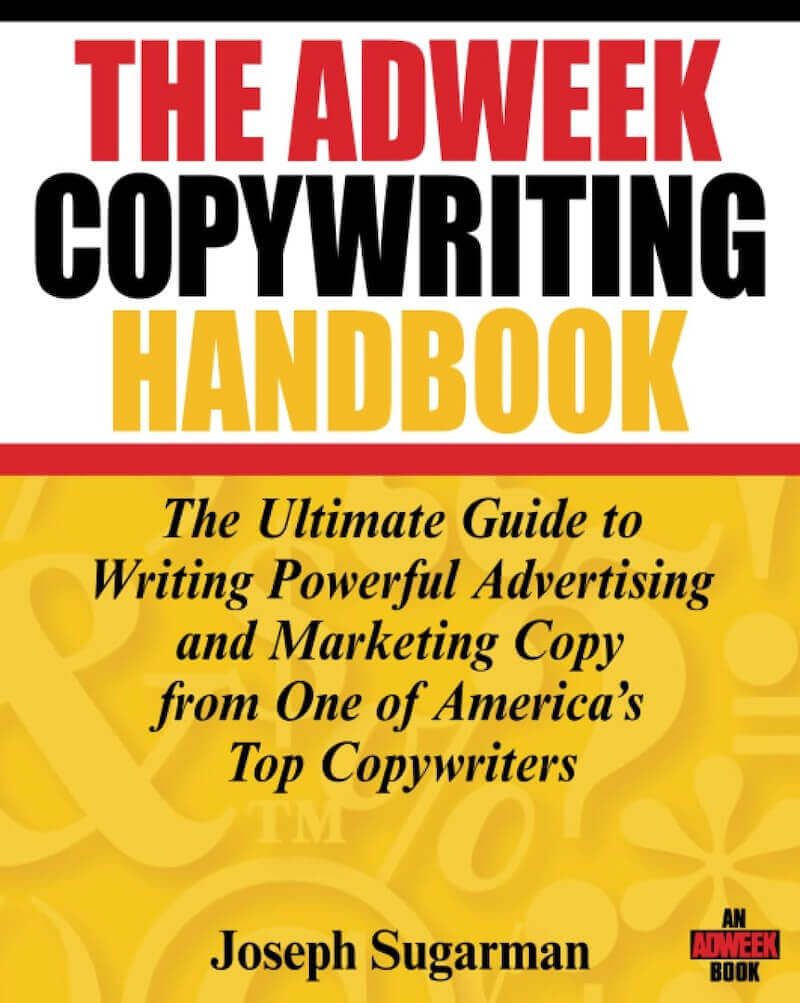
Sugarman shows how to apply direct response principles to content marketing for better results. His famous “slippery slide” concept helps you write content that keeps readers engaged from first sentence to last.
The book teaches you how to create content that both ranks well and converts readers. For example, Sugarman provides specific sentence structures that create momentum and pull readers through your content—techniques that work equally well for blog posts, landing pages, or product descriptions.
–
Book Application Frameworks – From Theory to Practice
Knowing which books to read is only the first step. Next, let’s explore how to actually use what you learn from these resources in your everyday writing.
The Copywriter’s Handbook (Robert Bly)
AIDA
Bly breaks down the classic AIDA formula (Attention, Interest, Desire, Action) into practical steps. You can adapt this model for websites, emails, or social media with the specific guidance he provides.
The handbook includes power-word lists for each AIDA stage to make implementation easier. For example, Bly provides specific transition phrases to move from Interest to Desire, like “But that’s not all” and “Here’s why this matters to you”—practical language you can use immediately.
–
Ca$hvertising (Drew Whitman)
The Life-Force 8 Desires
Whitman’s framework helps you identify which core human desires connect most strongly to your product. The book includes templates for addressing each desire in both headlines and body copy.
You’ll find trigger words and phrases specific to each desire for quick implementation. For example, when targeting the desire for approval, Whitman provides specific phrases like “people will notice” and “admiring glances”—expressions you can drop into your copy to trigger emotional responses.
–
Breakthrough Advertising (Eugene Schwartz)
Market Sophistication Levels
Schwartz describes five levels of market sophistication that determine which approaches will work for your audience. The book includes diagnostic questions to determine your market’s current level.
You’ll see copy examples aligned to each of the 5 levels, from new markets to highly skeptical ones. For instance, Schwartz shows how weight loss claims evolved from simple “Lose weight!” promises (Level 1) to mechanism-focused claims (Level 3) to highly specific claims with limitations (Level 5)—a pattern that applies to any market.
–
Everybody Writes (Ann Handley)
The Content Rules Application
Handley provides a simple “Utility × Inspiration × Empathy” matrix for evaluating your content. Her 17-point content quality checklist makes it easy to spot weaknesses before publishing.
The book includes a “shed the corporate speak” translation guide with before-and-after examples. For instance, Handley transforms “We provide innovative solutions utilizing cutting-edge technology” into “We help [specific customer] solve [specific problem] with [specific tool]”—a practical formula for clearer writing.
–
Email Persuasion (Ian Brodie)
Relationship-First Email Framework
Brodie offers a complete Authority-Building Sequence template you can adapt for your business. The book outlines a 7-step nurture sequence blueprint that gradually builds trust with subscribers.
You’ll learn which psychological triggers work specifically for email engagement, not just general marketing. For example, Brodie shows how to use the “Damaging Admission” technique in emails—where you openly share a limitation or weakness, which counter-intuitively increases trust and credibility.
–
The Boron Letters (Gary Halbert)
The Emotional Connection System
Halbert explains his A-pile vs. B-pile concept—how to make your message stand out from other messages. The book shows how to translate personal narrative techniques to modern digital formats.
You’ll learn pattern interruption techniques that grab attention at critical points in your copy. For instance, Halbert demonstrates how changing pace and sentence structure can create “speed bumps” that force readers to pay attention to key points—a technique that works as well in emails today as it did in direct mail decades ago.
–
Building a StoryBrand (Donald Miller)
The SB7 Framework Implementation
Miller’s framework follows a clear sequence: Character, Problem, Guide, Plan, Call-to-Action. The book includes wireframing templates for websites and landing pages based on this story structure.
You’ll also get the one-liner formula for condensing your entire brand message for social media.
–
Made to Stick (Chip Heath & Dan Heath)
The SUCCESs Principles
The Heath brothers provide a checklist for evaluating your messages against their six “sticky” principles. You’ll learn specific techniques for improving any element that’s missing from your copy.
The book shows how to turn abstract concepts into concrete messages that connect with readers. For example, they explain how Subway’s Jared campaign succeeded by making abstract health benefits concrete through a relatable story—a principle you can apply to any complex or intangible product.
–
Words That Sell (Richard Bayan)
Power Word
Bayan organizes powerful words by situation and purpose for easy reference. The book includes word choice matrices for triggering different emotional responses from readers.
You’ll find sentence transformation templates that show how to strengthen weak messages. For example, Bayan provides before-and-after examples showing how replacing generic verbs like “improve” with stronger alternatives like “skyrocket” or “transform” can dramatically increase the impact of your headlines and calls to action.
–
They Ask, You Answer (Marcus Sheridan)
The Big 5 Topics
Sheridan identifies five question categories that drive the most sales when addressed openly: pricing, problems, comparisons, reviews, and best-in-class. The book outlines a content organization strategy that maximizes both usability and search visibility.
You’ll learn how to turn informational content into sales opportunities without being pushy.
–
The Adweek Copywriting Handbook (Joseph Sugarman)
Psychological Trigger Activation
Sugarman provides a trigger selection matrix based on product type and customer awareness. The book outlines a progressive disclosure model that gradually builds interest across a campaign.
You’ll get copywriting templates that incorporate multiple psychological triggers for maximum impact. For example, Sugarman breaks down his famous BluBlocker sunglasses ads to show exactly how he sequenced curiosity, scarcity, and social proof to create irresistible offerings—techniques you can adapt for your own products.
–
Tested Advertising Methods (John Caples)
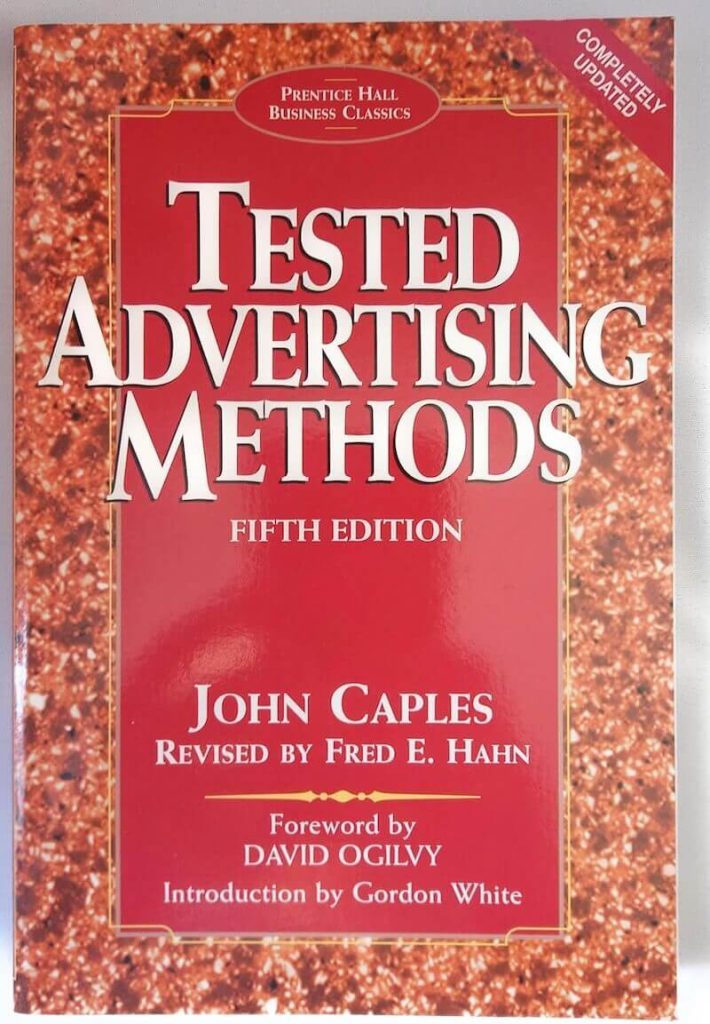
Scientific Headline
Caples presents 35 proven headline formulas with guidance on when to use each one. The book covers A/B testing methodology that still works perfectly for digital marketing.
You’ll learn the attention value scoring system for predicting headline performance before publishing. Note that the 4th edition (1998) is widely considered superior to the 5th edition, which was heavily revised by another author after Caples’ passing.
–
All Marketers Tell Stories (Seth Godin)
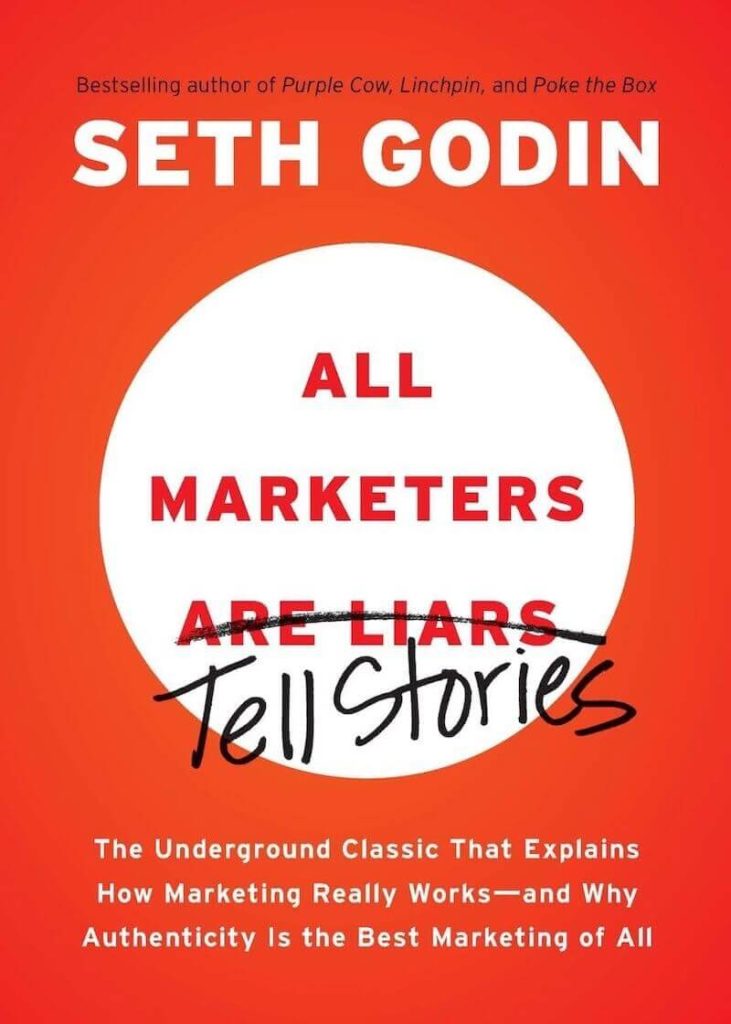
Worldview Alignment Strategy
Godin explains why it’s more effective to align with existing worldviews than to try changing them. The book presents an authenticity-first storytelling framework that builds genuine connections.
You’ll learn consistency principles for maintaining your story across different marketing channels. For example, Godin explains how MINI Cooper succeeded by embracing a “small is good” worldview instead of trying to convince people that their car was actually spacious—a principle you can apply to any product with apparent limitations.
–
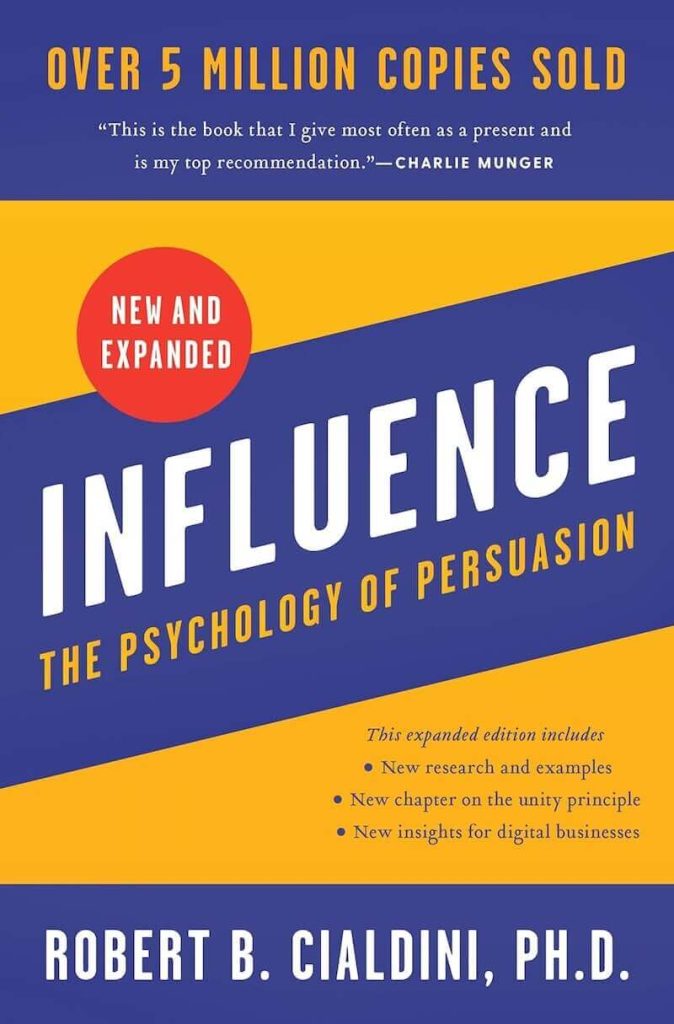
The 6 Principles of Persuasion
Cialdini identifies six universal principles of influence: reciprocity, commitment/consistency, social proof, authority, liking, and scarcity. The book shows you exactly when and how to use each principle ethically.
You’ll learn how to recognize and apply these principles in your own copy. For instance, Cialdini explains how adding genuine social proof to your messaging can increase conversion rates by 40% or more—a principle that works across all marketing channels and product types.
–
Beyond the Books: Building Your Copywriting Career
Now that you understand how to apply these copywriting books, let’s see how to transform this knowledge into a thriving copywriting business in today’s market.
Starting Your Copywriting Career in 2025
The landscape for beginning a copywriting career has evolved. While studying fundamentals from Claude Hopkins’ Scientific Advertising and other classics remains essential, today’s successful copywriters combine this knowledge with modern strategies.
Many folks begin as a freelance writer focusing on specific industries before expanding their freelance copywriting business. Understanding both the craft and business side is crucial—books like Dan Kennedy’s Ultimate Sales Letter provide great advice on managing the writing business aspects many creative people overlook.
The ability to create persuasive sales letters and direct response copywriting continues to command premium rates in the marketing world. Business owners particularly value copywriters who can demonstrate how their work directly affects business growth through measurable results.
Learning From Masters Across Generations
The principles established by the very best copywriters remain relevant even as platforms change.
David Ogilvy’s observations about human psychology and human behavior still inform what makes a good advertisement today.
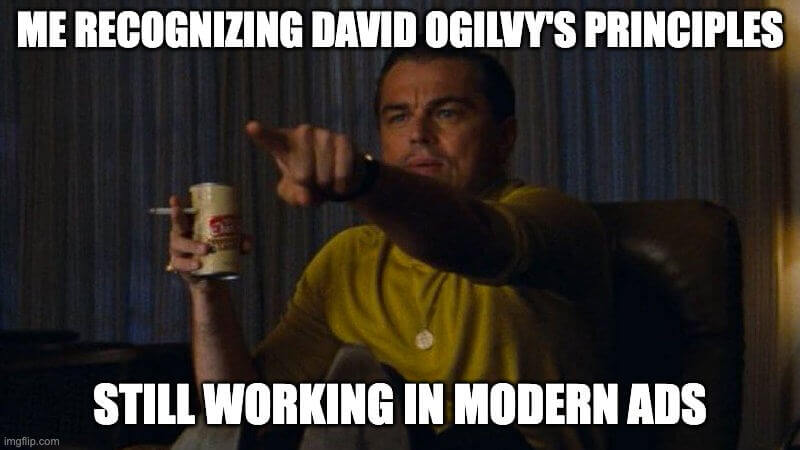
Contemporary experts like Drew Eric Whitman build upon these foundations while adapting to digital formats. Figures like John Carlton (often called the marketing rebel) and strategist Jay Abraham offer approaches that many consider pure gold for connecting with modern audiences.
Becoming a well-rounded copywriter means studying diverse perspectives.
While some find value in online courses to learn copywriting, the timeless strategies in a copywriting classic often provide the most durable foundation. Many professionals are a big fan of applying these principles when creating ad copy across platforms from social media to email campaigns.
The Modern Path to Copywriting Success
Today’s best copywriters typically follow this updated step by step process:
Build fundamentals
Create a digital portfolio showcasing your understanding of different copy formats
Develop expertise in specific industries or copy types to attract ideal clients
Continually test and measure results to refine your approach
Stay current through other books, communities, and adaptation to emerging platforms
With these business fundamentals in mind, let’s talk about creating your personal action plan for copywriting success…
–
Your Copywriting Book Action Plan
Here’s how to put your new knowledge to work:
Step 1: Choose your starting point based on what you write most often. Pick the beginner book from that category to build a solid foundation.
Step 2: Apply what you learn immediately to a current project. Don’t just read—implement the frameworks from each book.
Step 3: Track your results by measuring before-and-after performance of your copy. Look at metrics like conversion rates, click-throughs, or engagement.
Step 4: Build your skills methodically by moving from beginner to advanced books in your focus area. Then expand to other types of copywriting as needed.
Even the best books only work if you actually use what they teach.
Start with 1 book. Master its principles. Then move on to the next for steady improvement.
Which copywriting book will you read first?
Related
- SendOwl vs Gumroad: The Recurring Revenue Black Hole (2026)
- Gumroad vs Sellfy: The Vendor Lock-in Cage (2025)
- Gumroad vs Payhip: The Hidden Trap for Creators (2025)
- ThriveCart vs SamCart – The Subscription Hostage Trap (2025)
- 8 ThriveCart Alternatives & The Lifetime Pricing Paradox (2025)
- 8 SamCart alternatives + Subscription hostage (2025)
- The GENTLE Method: Soft marketing for creators
- How Far in Advance Should You Promote a Webinar?
- The SAVINGS Method: The Productivity Improvement Plan for Creators
- 9 Questions to Ask: How to Hire a Digital Marketing Agency
